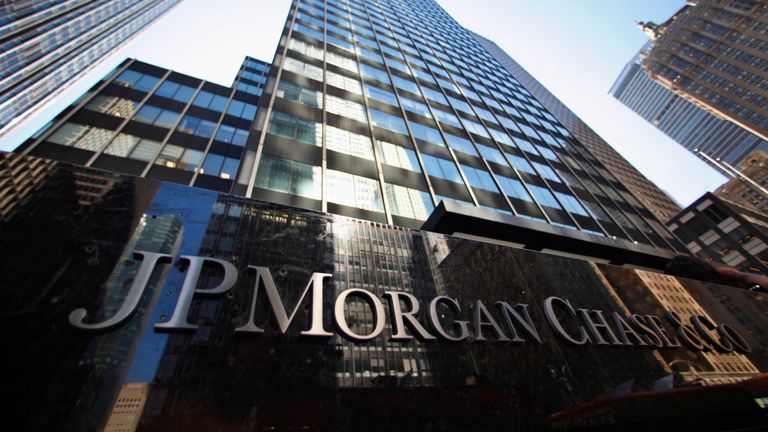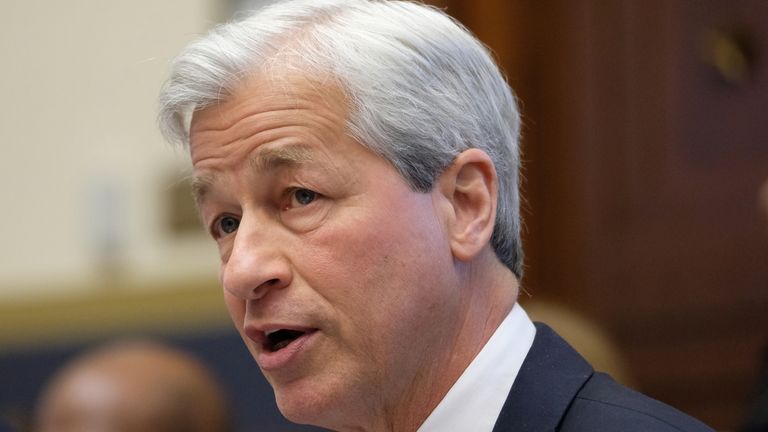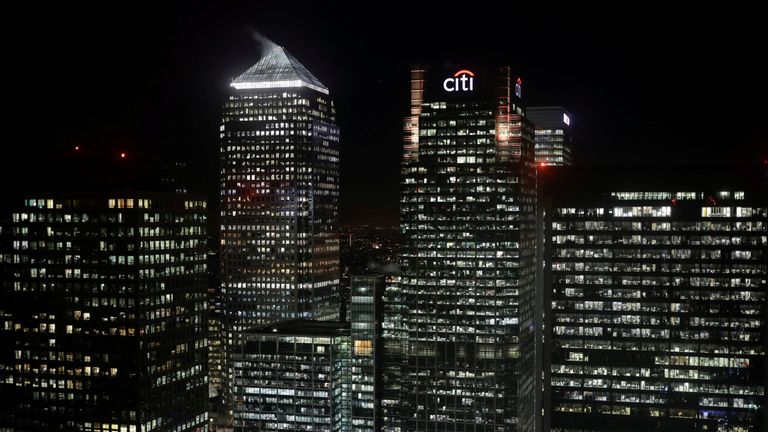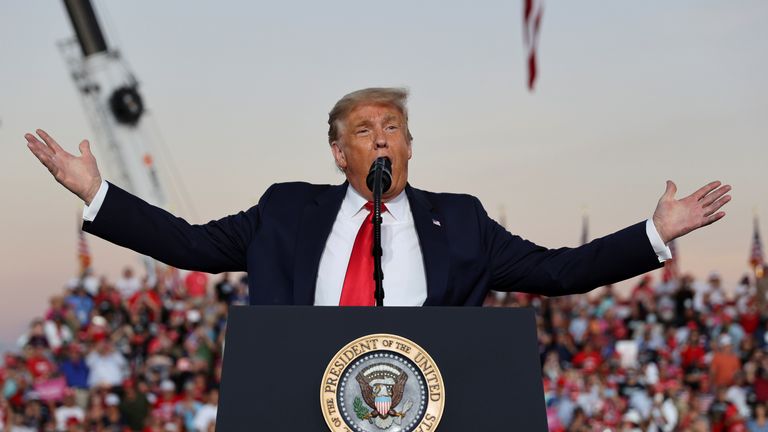As a rule of thumb, the profits of banks tend to reflect the health of the economies in which they operate.
So those wondering about the strength of the US economy’s recovery from COVID-19 will have been scrutinising this week’s third-quarter updates from America’s big banks carefully for clues.
There have already been common themes this year: In April, all of the big US banks reported a drop in profits, with JP Morgan Chase, America’s (and the world’s) biggest bank by stock market capitalisation, highlighting the extent to which big corporate clients had been drawing on lines of credit as they braced themselves for the crisis.
In July, meanwhile, the big US banks revealed they had set aside almost $40bn (£31bn) to cover the eventuality of souring loans.
So what of the latest quarter?
Well, optimists can point to the results from JP Morgan Chase on Tuesday.
Its results for the third quarter were much better than expected, with profits of $9.4bn (£7.2bn) for the quarter actually higher than the $9.1bn (£7bn) it achieved in the same three months last year, something Wall Street’s analysts had not expected.
Only in its consumer banking division did the company see a drop in profits, with its other three main divisions – corporate and investment banking, commercial banking and asset and wealth management – all turning in healthy increases.
Strikingly, the bank added little to its existing loan loss provisions, suggesting it does not expect much further deterioration in its loan book.
Yet Jamie Dimon and Jennifer Piepszak, respectively the chief executive and chief financial officer, were careful to strike a cautious tone when speaking with reporters and analysts.
Mr Dimon noted: “A good, well-designed stimulus package will simply increase the chance we get better outcomes, but there is so much uncertainty we’re not saying that that’s definitive.”
He went on to un-nerve investors by warning: “If you have a double-dip, there will be considerable pain and suffering.”
And Ms Piepszak added: “We are prepared for a double-digit unemployment, peak unemployment, level.”
Citi, reporting the same day, was even less optimistic.
America’s fourth largest bank by market value did, like JP Morgan Chase, manage to produce forecast-busting results.
But its profits for the third quarter, of $3.23bn (£2.5bn), were down 34% on the same three months a year ago.
Mike Corbat, the outgoing chief executive, insisted Citi was navigating “the effects of the COVID-19 pandemic extremely well”.
But Citi, which was criticised on its call with analysts over its executive pay and the fact that Mr Corbat is waiting until February before handing over to his Scottish-born successor Jane Fraser, also sounded a cautionary note.
Mark Mason, the chief financial officer, said: “We expect to see continued pressure and [our consumer banking division] reflecting the impact of rates and lower levels of activity related to COVID-19.”
Wednesday’s batch of earnings updates brought similarly cautionary comments.
Bank of America, the country’s second largest lender by market capitalisation, reported a profit of $4.9bn (£3.8bn).
That was up 38% on the April to June quarter but was down 16% on the same three months a year ago.
That ought not to be a surprise, given the way the US Federal Reserve has cut interest rates during the past year, but perhaps highlights the scale of JP Morgan’s achievement in beating its profits a year earlier.
BoA also, like its peers, set aside substantially less to provide for the non-repayment of loans and Brian Moynihan, the chief executive, also noted that he had seen the bank’s customers spending during the quarter in a way reminiscent of before the pandemic.
Meanwhile, Wells Fargo, America’s third largest lender by market value, reported results below expectations, despite profits of $2bn (£1.5bn) for the quarter showing a marked improvement on the loss of $2.38bn (£1.8bn) – its first loss since the financial crisis – during the second quarter. It reported weak loan growth but, like its peers, it too set aside significantly less for souring and doubtful loans than in the previous quarter.
Arguably, the star so far of the bank reporting season has been Goldman Sachs, which reported a quarterly profit of $3.68bn (£2.8bn) – comfortably ahead of analyst expectations and also well up on the $1.88bn (£1.4bn) on the same three months a year ago.
Investment banking and trading were the main drivers for growth, with Goldman benefiting both from the rise in the number of stock market flotations during the quarter and a rip-roaring performance from its bond trading division, whose revenues were almost 50% higher than the same quarter last year. It is being seen as a positive signal for Morgan Stanley, Goldman’s rival, which reports its results on Thursday.
Overall then, it is fair to say that the results so far from America’s banks point to a modest recovery in the economy, while it is notable that – as in the UK – American households are saving more. All of the major banks have reported an increase in deposits.
The other common theme is that provisions this quarter for doubtful loans were lower than they were between April and June.
That, too, provides room for cautious optimism. Things could be much worse.
Yet there are also plenty of headwinds. Unemployment is rising as scores of big US employers as diverse as Walt Disney, Dow Chemical and American Airlines all take the axe to jobs.
And, most critically, US interest rates remain at close to zero – squeezing the margin between what banks charge borrowers and pay depositors.
It means that banking executives like Mr Dimon will continue to urge US Congress to come up with another stimulus package.




